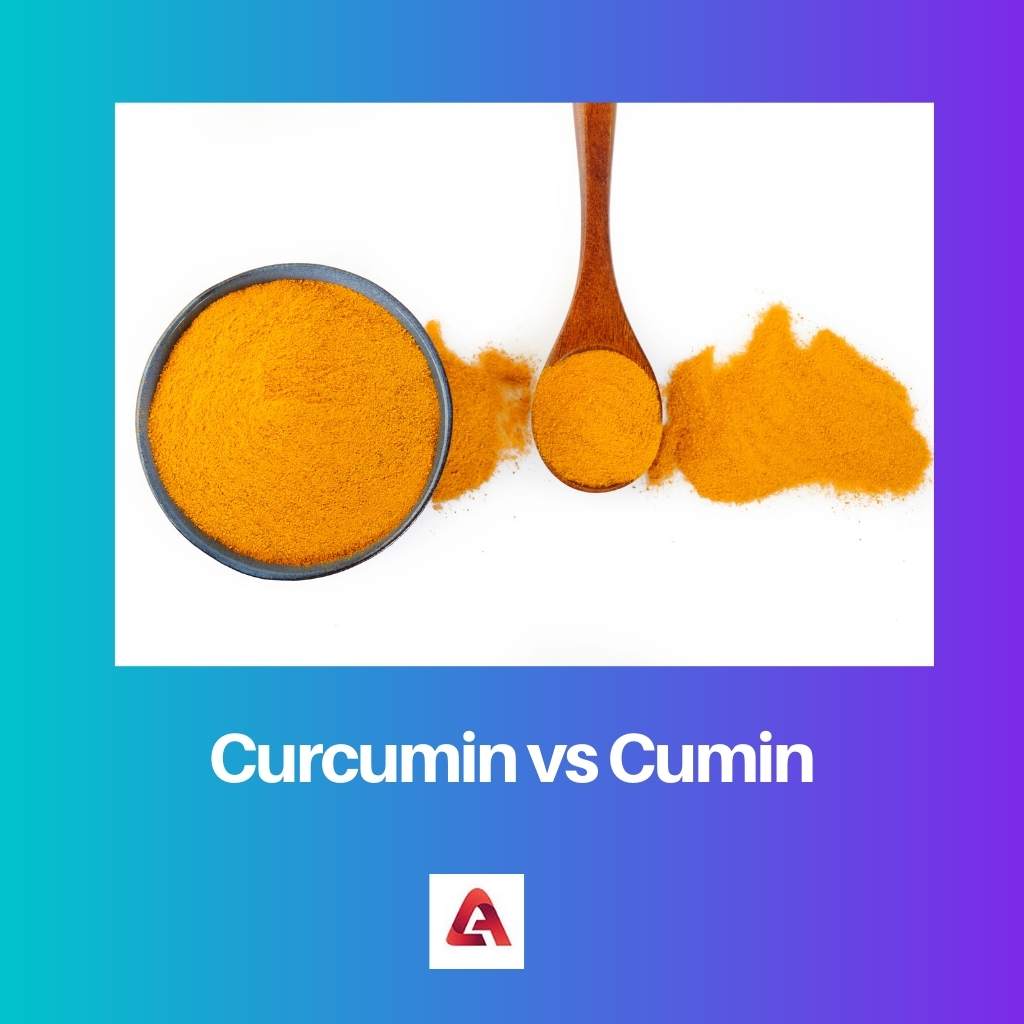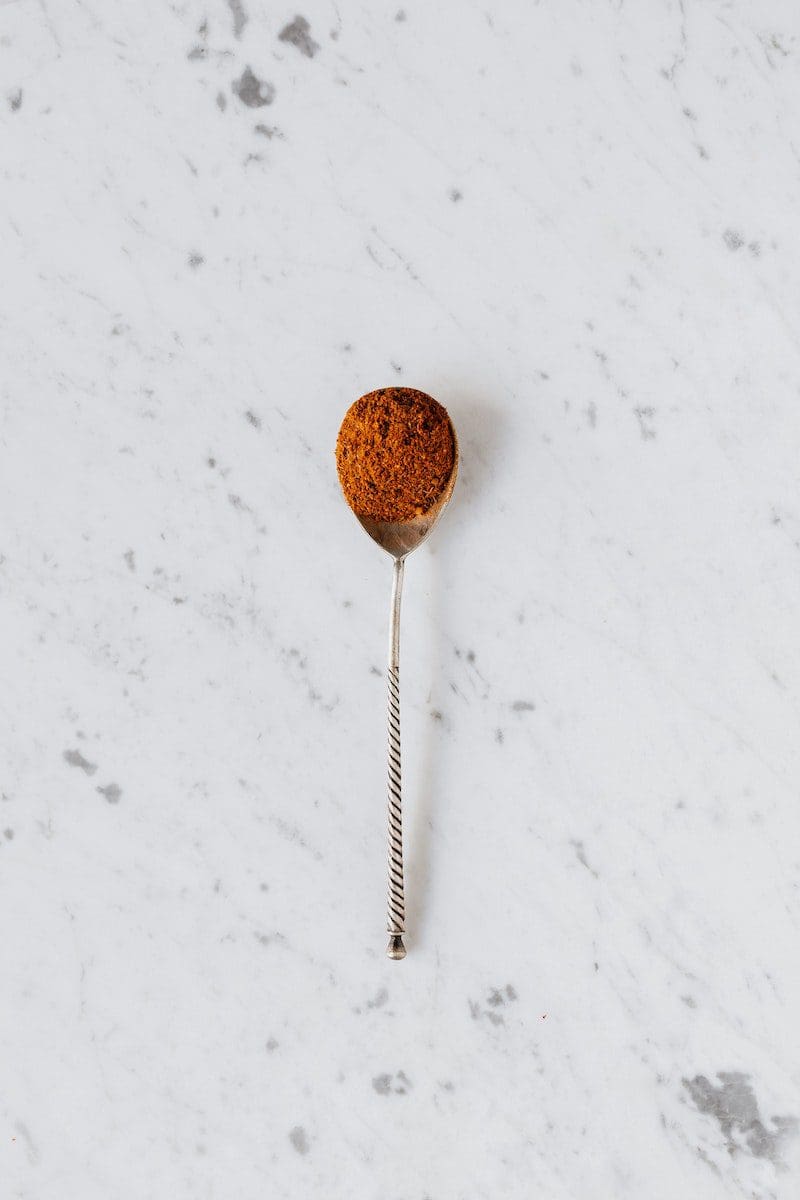Considering the health benefits that Curcumin and Cumin can have, it is incorrect to confuse the two. Turmeric’s active ingredient is curcumin, while cumin is a seasoning in and of itself.
Key Takeaways
- Curcumin is a compound found in turmeric, while cumin is a spice used in cooking.
- Curcumin has anti-inflammatory and antioxidant properties, while cumin is used to enhance food flavor.
- Curcumin has a bright yellow color, while cumin is brown in color.
Curcumin vs Cumin
The difference between Curcumin and Cumin is that Curcumin is a turmeric product, and cumin is a seed from the same-named plant. Turmeric has a yellow color from curcumin, while cumin has a brownish color. Curcumin and cumin are also thought to have cancer-fighting properties.

Curcumin, a component of the ginger family, is botanically classified as Curcumin longa, cultivated across Asia, and contains curcumin, a potentially carcinogenic constituent.
Cumin is indigenous to the eastern Mediterranean region and is used in the Middle East, Indian, African, and South American delicacies.
Comparison Table
| Parameters of Comparison | Curcumin | Cumin |
|---|---|---|
| Significance | Curcumin is a turmeric compound and isn’t found in the market. | Cumin is a seed from the same-named plant. |
| Color Rendered | Curcumin gives the color yellow whenever added to anything. | Cumin, on the other hand, gives brownish color wherever used. |
| Found in | Curcumin is basically found in turmeric. If a person is looking to complete their dose of curcumin, consuming adequate turmeric is sufficient. | As used in Indian cuisines, Garam Masala comprises cumin powder in adequate amounts. |
| Resemblance | As mentioned above, it is nothing but an ingredient found in turmeric. | It is a seed that resembles caraway. |
| Uses | Turmeric is used to give color to food, so this is the function of Curcumin too. | As used in Garam Masala, cumin is a spice that is used to give a better taste to food. |
What is Curcumin?
Curcumin is also known as diferuloylmethane. It is accountable for the spice’s golden color and provides a high medicinal value. It is well-known for its antioxidant and anti-inflammatory properties.
The photosynthetic pigment curcumin is liable for the turmeric root’s hue, which is yellowish outside and a dazzling reddish-orange on the inside.
Curcumin is unusual because it has 2 different antioxidant functions in its chemical structure, contributing to its superior disease-fighting abilities.
Curcumin has anti-inflammatory, antimicrobial, anticonvulsant, and carminative properties, similar to cumin. Turmeric is defined as a gastrointestinal tonic that can function by relieving intestinal spasms.

What is Cumin?
Cumin is an ingredient of both chilli powder and curry powder, and it may have health benefits.
As per a study published in Critical Reviews in Food Science and Nutrition in 2015, its key ingredient, cumin aldehyde oil, has antibacterial and antifungal properties.
Cumin is a tiny plant that grows in warm environments and produces seeds. These seeds have a boat appearance and are lighter in color than caraway seeds.
In India, Mexico, and the Mideast, cumin seeds are widely used. Cumin is thought to have a variety of health benefits, including reducing heartburn, nausea, and diarrhoea by producing pancreatic enzymes.
Cumin has been shown to have anti-cancer effects by scientists, as it has the potential to destroy free radicals, which are thought to be responsible for cancerous cells.

Main Differences Between Curcumin and Cumin
- As mentioned above, it is nothing but an ingredient found in turmeric. On the other hand, Cumin is a seed that resembles caraway.
- Turmeric is used to give color to food, so this is the function of Curcumin too. Cumin, as used in Garam Masala, is a spice that is used to give a better taste to food.


I appreciate the clear comparison between Curcumin and Cumin. The detailed information helps in understanding how they are used and their respective benefits.
This article provided an excellent comparison of Curcumin and Cumin, highlighting their differences and uses effectively.
The scientific references included in the article add credibility to the information presented. It was very informative.
The article provided valuable information about Curcumin and Cumin, emphasizing their significant differences and health properties.
The article offered valuable insights into the distinctions and uses of Curcumin and Cumin. It was well-researched and informative.
I appreciate the comprehensive analysis of Curcumin and Cumin, which was informative and enlightening.
The article offered a comprehensive analysis of the distinctions between Curcumin and Cumin, shedding light on their properties and uses.
The in-depth comparison of Curcumin and Cumin was enlightening. It provided valuable insights into their roles and benefits.
The in-depth comparison of Curcumin and Cumin in the article was enlightening and well-presented.
The detailed comparison of Curcumin and Cumin offered valuable insights into their properties and uses, making the article very informative.
The information presented in the article about Curcumin and Cumin was highly informative and thought-provoking, providing an excellent understanding of their differences and health benefits.
The article provided an excellent overview of the distinctions between Curcumin and Cumin, offering valuable knowledge about their roles and benefits.
The article effectively highlighted the differences and benefits of Curcumin and Cumin, presenting valuable insights supported by scientific references.
I found the comparison between Curcumin and Cumin to be thorough, informative, and well-researched, providing an excellent understanding of their distinctions.
The article provided a comprehensive understanding of the differences between Curcumin and Cumin, helping readers grasp their unique properties and benefits.
Thank you for the detailed information. It is crucial to understand the differences between Curcumin and Cumin, as well as the health benefits associated with them.
I appreciated the article for the way it detailed the distinction between Curcumin and Cumin. It was indeed insightful.
I found the information provided to be quite interesting. It was well-researched and informative.
The detailed comparison of Curcumin and Cumin in the article was informative. It clarified their differences and applications effectively.
The scientific insights offered in the article were insightful and informative, making it an excellent source of knowledge about Curcumin and Cumin.
I found the article to be an excellent resource for understanding the distinctions between Curcumin and Cumin. It was well-written and informative.
The detailed comparison of Curcumin and Cumin was enlightening and well-articulated, offering valuable insights into their characteristics and potential health benefits.
I found the article to be a comprehensive and informative resource for understanding the differences and health properties of Curcumin and Cumin.
The comparison provided a clear understanding of Curcumin and Cumin, presenting valuable insights into their roles and potential health benefits. It was an informative read.